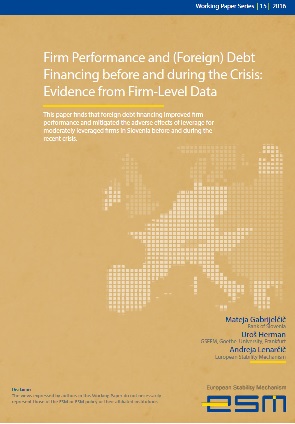Campos, Nauro, Macchiarelli, Corrado, (2016), “A new measure of economic asymmetries in the Eurozone”, VoxEu, 19 October Explanations for the Eurozone Crisis rely on the notion of cross-country asymmetries. The core-periphery pattern to the EU was first established by Bayoumi and Eichengreen in 1993, prior to the Eurozone. This column replicates their approach to explore whether the euro has strengthened or weakened this pattern. A new ‘coreness index’ indicates that …Read More
A framework for thinking about bad loans
Demertzis, Maria, (2016), “A framework for thinking about bad loans”, Bruegel, 18 October An important guiding principle in resolving non-performing loans (NPLs) should be to ensure that viable debt remains serviced, while non-viable debt gets resolved. We present here a framework to approach the issue. Relevant Posts Panagiotarea, Eleni, (2016), “The Political Economy of NPLs resolution: Ownership and conditionality”, Hellenic Observatory LSE, 13 October Minenna, Marcello, (2016), “The Italian Non-Performing Loans …Read More
Toxic Politics Versus Better Economics
A. El-Erian, Mohamed, (2016), “Toxic Politics Versus Better Economics”, Project Syndicate, 15 October The relationship between politics and economics is changing. Advanced-country politicians are locked in bizarre, often toxic, conflicts, instead of acting on a growing economic consensus about how to escape a protracted period of low and unequal growth. This trend must be reversed, before it structurally cripples the advanced world and sweeps up the emerging economies, too. Relevant Posts …Read More
Resolving Europe’s Banking Crisis in Italy
Reichlin, Lucrezia, Vallée, Shahin, (2016), “Resolving Europe’s Banking Crisis in Italy”, Project Syndicate, 14 October The European banking sector is crippled and highly fragmented. Though its problems are more acute for some countries and financial institutions, the sector runs on a level of profitability that is, on average, lower than its cost of equity and maintains a stock of non-performing loans and hard-to-value assets large enough to undermine its capitalization for years …Read More
The Blind Side of Public Debt Spikes
Jaramillo, Laura, Mulas-Granados, Carlos, Kimani, Elijah, (2016), “The Blind Side of Public Debt Spikes”, IMF Working Paper, October What explains public debt spikes since the end of WWII? To answer this question, this paper identifies 179 debt spike episodes from 1945 to 2014 across advanced and developing countries. We find that debt spikes are not rare events and their probability increases with time. We then show that large public debt spikes …Read More
Countering a regressive and illiberal Europe
A. Emmanouilidis, Janis, Zuleeg, Fabian, (2016), “Countering a regressive and illiberal Europe”, European Policy Centre, 13 October After the Brexit vote and the collective failure to predict the impending earthquake and ‘sign of times’, it would be a mistake to carry on as if nothing had happened. Although the UK is undoubtedly a special case, there is a need to reflect more fundamentally on the state of European integration and …Read More
Reflections on the natural rate of interest, its measurement, monetary policy and the zero lower bound
Cukierman, Alex, (2016), “Reflections on the natural rate of interest, its measurement, monetary policy and the zero lower bound”, VoxEu, 15 October The decline in long-term interest rates has nurtured the view of a persistent shift of the natural rate into negative territory. This column argues that existing estimates of the natural rate, based on the New Keynesian model, are likely to be biased downward. It makes a case for …Read More
Keeping policy rates persistently low: Implications for the monetary transmission mechanism
Garriga, Carlos, Kydland, Finn, Šustek, Roman, (2016), “Keeping policy rates persistently low: Implications for the monetary transmission mechanism”, VoxEu, 16 October Central banks responded to the financial crisis by cutting policy rates to prevent deflation and curb the decline in economic activity, but these responses have been anything but temporary. This column explores whether the sticky price channel is still relevant in an environment of persistently low rates. Although the …Read More
Firm Performance and (Foreign) Debt Financing before and during the Crisis: Evidence from Firm-Level Data
Gabrijelčič, Mateja, Herman, Uroš, Lenarčič, Andreja, (2016), “Firm Performance and (Foreign) Debt Financing before and during the Crisis: Evidence from Firm-Level Data“, ESM Working Paper Series, July We study the effects of financial leverage and foreign financing on firm performance before and during the recent crisis, using a large panel of Slovenian companies. We find a significant negative impact of leverage on firm performance, even when we explicitly control for the reverse causality between …Read More
ECB bank supervision cannot tackle debt restructuring single-handedly
Lehmann, Alexander, (2016), “ECB bank supervision cannot tackle debt restructuring single-handedly”, Bruegel, 13 October The European Central Bank has begun to tackle a key symptom of banking sector fragility with its proposed guidelines on banks’ management of non-performing loans (NPLs). But detailed targets for the reduction of NPLs and prescriptions for the internal governance and management of distressed assets also represent a new style of more intrusive supervision. For the …Read More





